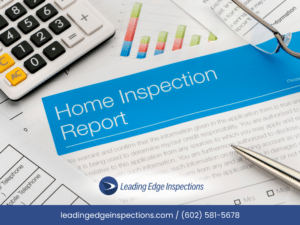 Setting Realistic Expectations for Your Home Inspection
Setting Realistic Expectations for Your Home Inspection
When buying a home, scheduling a professional home inspection is one of the most important steps you can take. It offers peace of mind and a clearer understanding of the property’s current condition. But what if something goes undetected during the inspection? This concern is common, and it’s important to understand what a home inspection is—and isn’t. Industry standards, visual limitations, and the inspection agreement all play a role in shaping realistic expectations.
This guide explains what inspections typically include, why some issues may not be visible, and how buyers and inspectors can work together for the best results.
What a Home Inspection Includes
A standard home inspection is a visual, non-invasive review of the home’s major systems and components. The inspector evaluates what is visible and accessible on the day of the inspection, providing insights into the home’s overall condition. Common areas assessed include:
– Roof and attic
– Exterior siding, windows, and doors
– Foundation, grading, and drainage
– Electrical and plumbing systems
– HVAC system
– Interior walls, ceilings, and floors
Note: Inspectors do not open walls, dismantle systems, move furniture, or perform specialized testing (such as mold, radon, or pest inspections) unless contracted as an additional service.
Why Certain Issues May Not Be Found
Even the most experienced, licensed home inspector works within the limitations of a visual inspection. Some problems may go undetected due to:
– Inaccessible areas: Rooms or crawl spaces blocked by belongings or construction
– Hidden conditions: Defects concealed behind walls, underground, or inside sealed systems
– Weather or seasonal factors: Some issues, like roof leaks, may not be visible in dry conditions
– Specialized concerns: Radon, mold, or sewer line issues require separate inspections
– Snapshot in time: The inspection reflects the home’s condition on the day it’s inspected, not its future performance
Inspection Agreements and Standards
1. Contracts and Disclaimers
Home inspectors provide agreements that outline the scope and limitations of the inspection. These contracts help clarify that certain issues may not be visible or accessible during the visit.
2. Industry Standards
Inspectors follow recognized standards of practice, ensuring a consistent and thorough approach. While detailed, inspections are not exhaustive and cannot uncover every possible defect.
3. State Regulations
Arizona, like other states, has regulations for home inspections, including time limits for raising concerns. Review both your inspection agreement and state laws to understand your rights.
How Buyers Can Protect Themselves
Taking a proactive approach can reduce risk and increase peace of mind:
– Hire a certified, licensed inspector with strong reviews
– Read and understand the inspection agreement
– Attend the inspection and ask questions
– Schedule optional inspections for mold, pests, radon, or sewer lines if needed
– Review the inspection report carefully
– Consider a home warranty for added coverage
The Inspector’s Role in the Buying Process
Professional inspectors aim to support confident decision-making by:
– Delivering clear, detailed reports with labeled photos
– Staying current with licensing and training requirements
– Explaining the inspection process and limitations upfront
– Documenting inaccessible or unsafe areas
– Maintaining professional insurance, such as Errors & Omissions coverage
Frequently Asked Questions
Is a home inspection a guarantee that everything is fine?
No. It’s a visual overview of the home’s condition at the time of the inspection. Some issues may not be visible or accessible.
What should I do if I find a defect after moving in?
Start by reviewing your inspection report and reaching out to your inspector with questions. If necessary, consult a specialist or contractor for a more thorough evaluation.
Can a home warranty help with unexpected repairs?
Yes. A home warranty can provide additional Peace Of Mind by covering certain systems and components not identified during the inspection.
A home inspection is one of the best tools for understanding a property’s condition before purchase. While it cannot guarantee a defect-free home, it provides a professional, objective view of the visible condition at the time of inspection.
By working with a qualified inspector and understanding the scope of their work, you can make more informed decisions and move forward with confidence.



